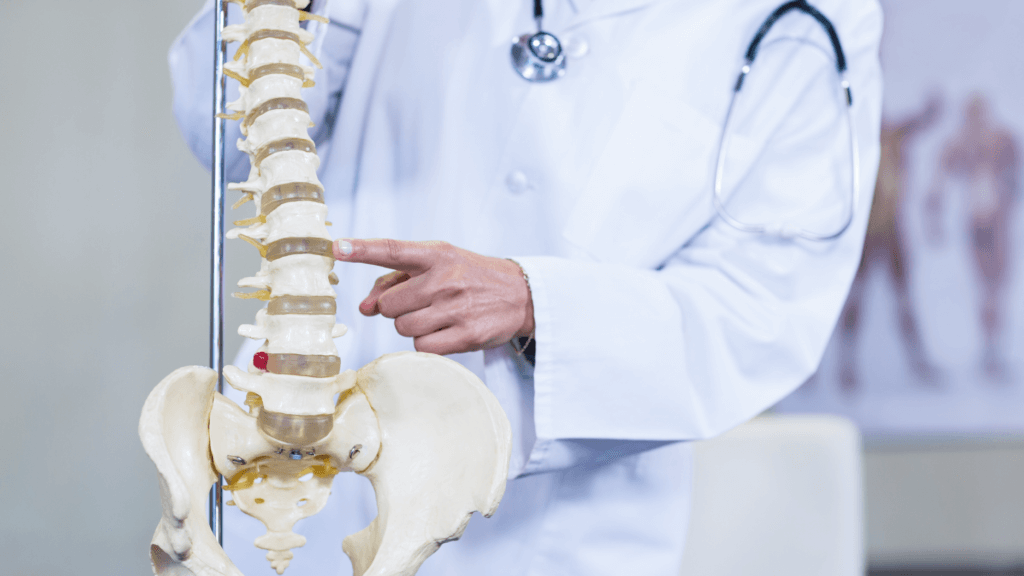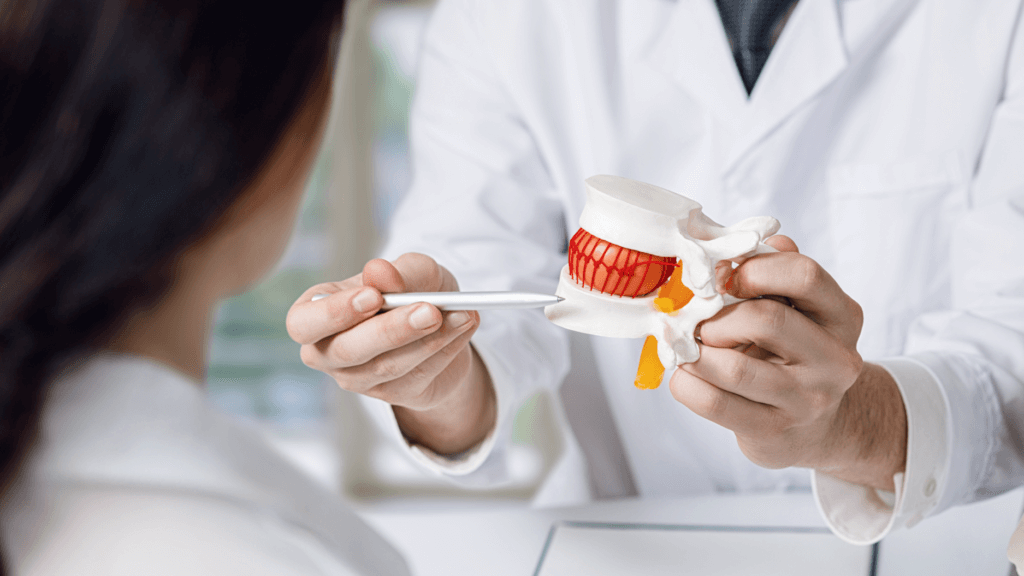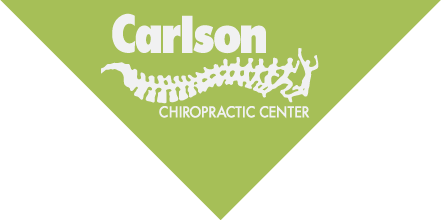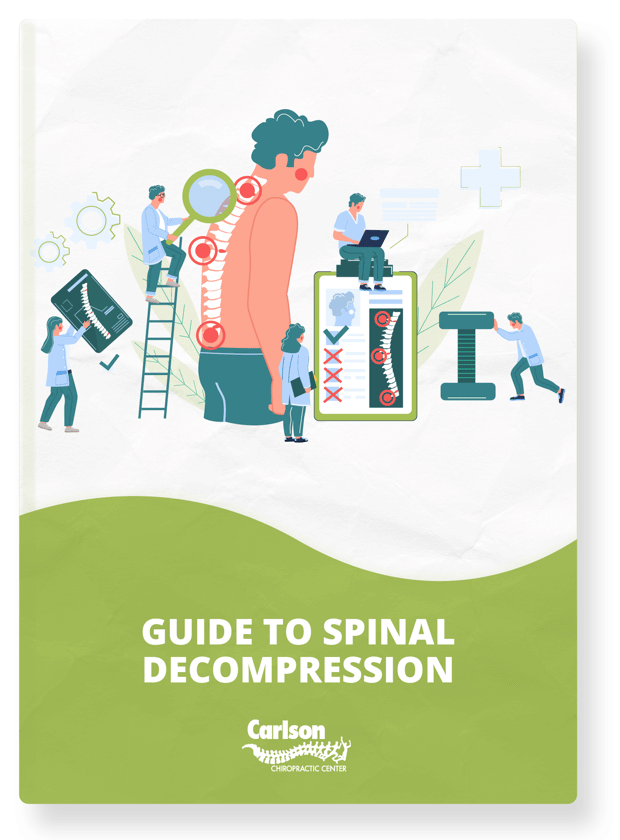Whether you realize it or not, your back is a primary player in many of your day-to-day movements, so when you’re suffering from back pain it can be very disruptive. Your back consists of multiple elements, each with the important function of protecting your spinal cord and the nerves that connect to other body parts. Let’s break it down.

Anatomy of the Spine and Disc
To perform daily functions such as sitting, standing, twisting and bending, your back contains the necessary blood vessels, tendons, ligaments and muscles do so. Each links together in one way or another to keep your body intact and mobile.
In addition, on the outermost level, you have the spinal canal made up of the vertebral column and spinal discs. The vertebral column, or backbone, is made up of 33 bones. In between each of those bones are small, cushion-like shock absorbents called discs.
On the outside of the disc is the annulus fibrosis, which is a thick tire-like outer core. The inner core called the nucleus pulposus, has more of a gel-like consistency. These discs are very important in the makeup of the spine, but without proper spinal care, such as good posture, they can quickly become bulged or herniated. These injuries can cause a great deal of pain and typically occur in the lower back (lumbar) or cervical (neck) region.

Bulging vs. Herniated Disc
Bulging discs mean that part of the disc is protruding out into the spinal canal but has not torn or ruptured. On the other hand, a herniated disc indicated that the disc has indeed torn or ruptured. In each case, symptoms can include either sharp or dull pain the disc area, radiating pain down the leg, referred pain in another area, muscle cramping, spasm, tingling, or in some cases no pain at all. Both bulging and herniated discs can be treated with physical therapy, exercise, spinal decompression, or surgery as a last resort.
Suffering from back pain and curious about non-surgical relief?
Click below to download our Consumer Guide to Spinal Decompression!


